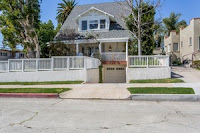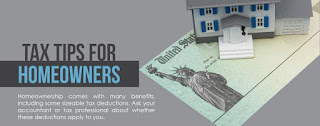There are certain differences between owner-occupied property and investor property (non-owner occupied) when it comes to selling--and buying, but here we are concerned more with selling.
Some owners who have rented out their residences and moved on to another location are surprised to find out when it comes time to sell that they may have lost their capital gains exclusion ($250,000, or $500,000 for married owners). On top of that, they may be paying the State of California 3-1/3% withholding tax upfront at the close of escrow. Additionally, if you took depreciation on an income property you now own as an investor, you will have additional reckoning at tax time. Please see
IRS Publication 523 for specific information.
Depreciation is a method for matching the costs of acquiring property over the properties’ estimated
economic life. The IRS requires that most properties be depreciated via the ‘straight-line’ depreciation method. Using the straight-line method, residential income properties are depreciated over 27.5 years. Commercial properties are depreciated over 39 years.
Depreciation Calculations
Land is not depreciable. In order to properly calculate depreciation, the value of land must be excluded. For example, a $1MM duplex with land worth $300,000 has $700,000 worth of depreciable real estate. Using the straight-line depreciation method, the annual depreciation amount is approximately $25,500 ($700,000/27.5) NOTE: The IRS will typically not challenge the assessment of the land value if it is reasonable. A tax advisor, attorney or real estate agent should be able to provide guidance for what is reasonable based on the location and type of land.
Depreciation Benefits
Depreciation is an ‘intangible expense’ that will reduce the reportable taxable income from the property, and means less tax to the IRS.
Here’s how it works:
The yearly rental income from the example duplex is $36,000. At the end of the year, this will have to
be reported to the IRS. However, the IRS does not tax the entire $36,000. The taxable income from the property is calculated as follows:
- Rental Income
- (Expenses)
- (Depreciation)
- Taxable Rental Income
If the expenses of operating and managing the duplex are $5,000 for the year, the taxable rental
income is calculated as follows:
- Rental Income $36,000
- (Expenses) ($5,000)
- (Depreciation) ($25,500)
- Taxable Rental Income $5,500
 NOTE: Please always seek the guidance of a tax advisor. Capital gains may or may not apply depending on how long you lived in the property, and depreciation items may be calculated on different schedules. To completely avoid last minute upsets and lose your deal, it's important to obtain your information before you sell--I once represented a buyer on a very nice fourplex where the seller finally obtained tax guidance after we opened escrow, only to be shocked by how much recapture tax had to be paid to the IRS since the property had been owned long enough to be fully depreciated. The seller cancelled escrow, much to the buyer's disappointment.
NOTE: Please always seek the guidance of a tax advisor. Capital gains may or may not apply depending on how long you lived in the property, and depreciation items may be calculated on different schedules. To completely avoid last minute upsets and lose your deal, it's important to obtain your information before you sell--I once represented a buyer on a very nice fourplex where the seller finally obtained tax guidance after we opened escrow, only to be shocked by how much recapture tax had to be paid to the IRS since the property had been owned long enough to be fully depreciated. The seller cancelled escrow, much to the buyer's disappointment.
Depreciation Tax
Upon the sale of an investment property, the IRS requires the payment of a depreciation re
tax, which means you have to "pay back" the money you were entitled to take previously. The tax rate is currently set at 25%. In the example above, if the duplex was owned for 10 years, the entire depreciation taken on the property would amount to $255,000 ($25,500 x 10). The IRS requires a recapture tax on that entire amount. Hence, the sale of the duplex will result in a $63,750 depreciation recapture tax (255,000 x 25%).
This is in addition to state and federal capital gains taxes. The depreciation recapture tax as well as any associated capital gains taxes can be deferred in full via a 1031 Exchange.
Conclusion
Of all the benefits of owning real estate, depreciation may be one of the most important. The tax advantage depreciation offers is powerful. The IRS will always assume that depreciation is taken and
will hold an investor liable for the deprecation recapture tax – even if the investor failed to take advantage of the depreciation. Bottom line: make sure you are taking advantage of this powerful tool.
Thanks to Asset Exchange Company for this sample.
 Now priced at $999,789. October 28 2015.
Now priced at $999,789. October 28 2015. The 3rd floor works beautifully as a large master with 3/4 bath, or guest suite, with expansive ocean/water views. As you enter the living room you will see the original hard wood floors with dark wood inlays, a Batchelder tile fireplace, and custom crown molding and plantation shutters covering the double paned windows. The large formal dining room has original inlays as well as original corner builtins. The kitchen also has a cozy fireplace, granite counters and tons of storage. The 2nd floor offers 3 bedrooms, including an office with builtins, plus a large bath. The large master on the 2nd floor has dual closets and a features a sitting area. This home offers central heat updated electrical, copper plumbing, central heat. Also featured is a subterranean 15x140 garage so no land is wasted on driveway and garage.
The 3rd floor works beautifully as a large master with 3/4 bath, or guest suite, with expansive ocean/water views. As you enter the living room you will see the original hard wood floors with dark wood inlays, a Batchelder tile fireplace, and custom crown molding and plantation shutters covering the double paned windows. The large formal dining room has original inlays as well as original corner builtins. The kitchen also has a cozy fireplace, granite counters and tons of storage. The 2nd floor offers 3 bedrooms, including an office with builtins, plus a large bath. The large master on the 2nd floor has dual closets and a features a sitting area. This home offers central heat updated electrical, copper plumbing, central heat. Also featured is a subterranean 15x140 garage so no land is wasted on driveway and garage.










